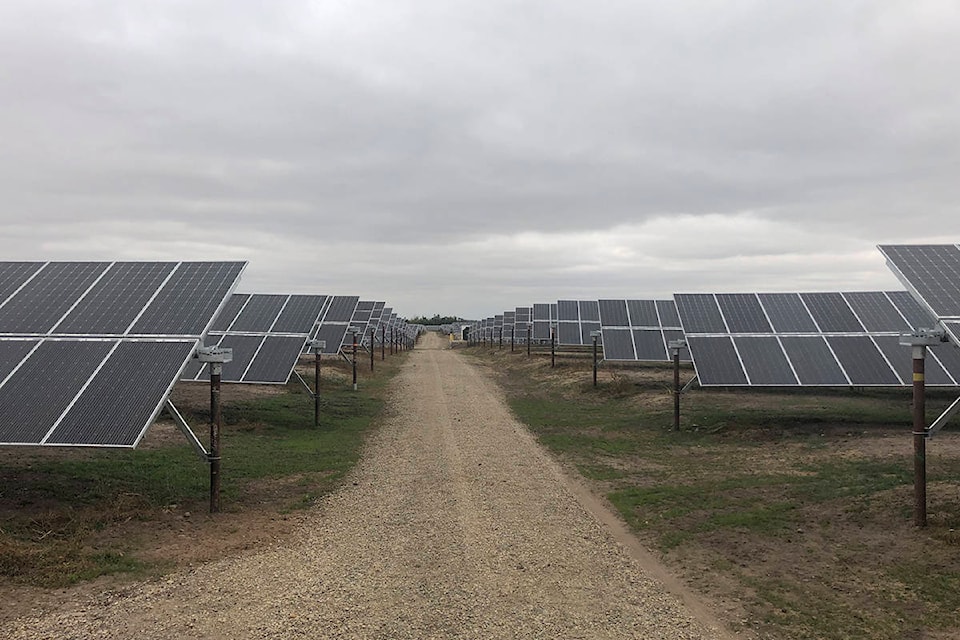Alberta, Saskatchewan and Manitoba will lead the country in renewable energy capacity over the next three years.
An online report by the Canada Energy Regulator published Wednesday says decreased reliance on coal and substantial increases in wind and solar capacity will increase the amount of renewable energy added to the grid in Alberta and Saskatchewan.
The pace of overall renewable energy growth is expected to slow nationally between 2021 and 2023 but will grow strongly in provinces with a large reliance on fossil fuel generation.
In Alberta, the share of renewables in the capacity mix is expected to increase from 16 per cent in 2017, to 26 per cent by 2023. The province is projected to nearly double its wind capacity between 2020 and 2023, with a significant solar capacity bump of 12,000 MW by 2023.
“When people think about the prairies, many of them think about fossil fuels,” said Darren Christie chief economist at the Canada Energy Regulator.
“Interestingly, our projections show they are actually now leading the way in renewable energy growth, while national levels will slow in the next three years.”
In central Alberta, Innisfail is home to a major Alberta solar farm.
The $24-million, 25.4 MW project was completed in November of 2020. They became the first municipality in the province to have a solar project on urban land. Innisfail is leasing the land for the project to Elemental Energy but is recouping tax benefits from the energy produced.
The electricity generated will be traded daily within the Alberta energy portfolio. Traditionally, solar power is sold under a power purchase agreement between a government agency and a utility company.
In a Solar Alberta panel on Feb. 25, Innisfail councillor Jean Barclay said there was some hesitancy about the project in the early days, but slowly, the community came around.
“Part of it is, we are Alberta. We are used to being an oil and gas province and that’s been hugely beneficial to us and Canada over several decades,” she said.
“Sometimes, when you take on a project like this, people may think if you’re for renewables, you are against oil and gas, that wasn’t the case at all.”
In 2010, 62.8 per cent of Canada’s total electricity generation (364 681 GW-h) was from renewable sources. By 2018, 66.2 per cent (425 722 GW-h) was from renewable sources and projected to be 71.0 per cent by 2023.
The report notes that beyond 2023, the growth of renewable power in Canada depends on technological developments, consumer preferences and government policies and programs.
According to the report, Canada is a world leader in renewable power, generating almost two-thirds of its electricity from renewables with hydro as the dominant source. Canada also has one of the world’s lowest carbon intensities for electricity.
Send your news tips
Like us on Facebook and follow us on Twitter
